The Dongria Kondh: Land Rights and Resistance Against Mining in Odisha
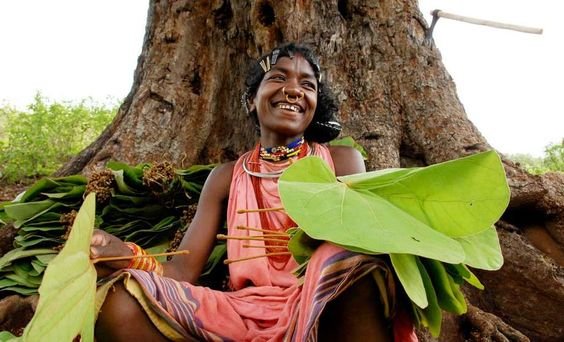
Odisha, one of the most beautiful places in India. What do we know about their people and their struggles? It is so shocking that their fight and resilience goes unnoticed by so many. Yet, they so not lose hope instead, stand united against the atrocities they encounter. Just like that, the tribe Dongria Kondh has fought for themselves and have triumphed over Vedanta Resources, this symbolizes resilience and determination against corporate exploitation. Let us understand their culture and their life to know more about their fight against corporate exploitation.

Nestled in the verdant expanses of Odisha’s eastern India, the Niyamgiri hill range stands as a sanctuary of natural beauty and cultural significance. Amidst the densely forested hills, deep gorges, and cascading streams, resides the Dongria Kondh tribe, it is a community that is deeply intertwined with the land they call home. To be a Dongria Kondh is not merely to inhabit these hills, but rather to embrace a way of life intricately linked to the rhythms of nature, to farm the fertile soils and to harvest the bounty of the land, but above all to worship with reverence the mountain god Niyam Raja and all those sacred peaks he watches over. The most notable is the peak towering over 4,000-meter summit known as Niyam Dongar, called the mountain of law.
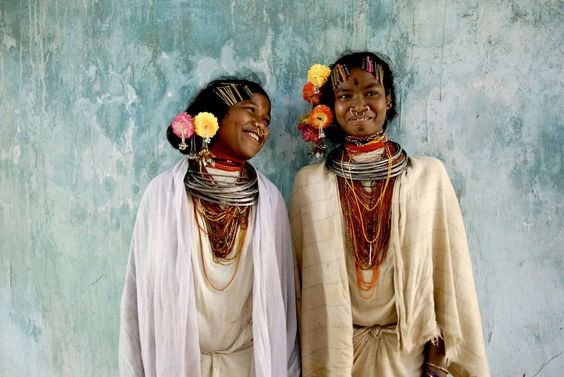
For over a decade now, the tranquillity of the Dongria Kondh’s existence has been threatened by the looming spectre of industrial encroachment. Their deep reverence for their gods, hills, and streams pervades every aspect of their lives. It not only shapes their spiritual beliefs but also their cultural expressions and personal adornments. At the heart of their identity, there lies a profound connection to the natural world which is also reflected in their art, jewellery, tattoos and hairstyles.
In Dongria villages, art is something that serves as a visual testament to their reverence for the mountains and the deities that dwell within them. Triangular designs, reminiscent of the towering peaks that define their landscape, adorn village shrines which are dedicated to the myriad gods of the land, from the guardian spirits of the forest to their revered leader, Niyam Raja. These are few sacred symbols that serve as a tangible manifestation of the Dongria’s spiritual bond with the land they call home. They honour the divine forces that shape their lives and sustain their communities.
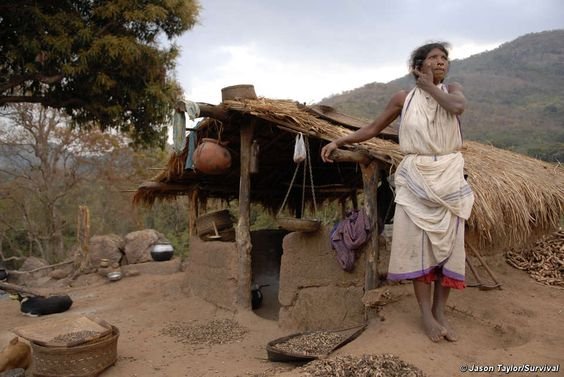
Apart from art, jewellery holds special significance in their culture, it serves as both adornment and symbol of identity. Women wear intricate pieces that are crafted from locally sourced material, including rings worn through their ears and multiple rings through their noses, each piece that they wear is an example of their connection to the earth and the traditions of their ancestors. Similarly, young boys display their heritage through the wearing of nose rings, it is a tradition that has been passed down through generations as a mark of cultural pride and belonging.

Interestingly, their hairstyles are also imbued with cultural significance, it reflects their age-old customs and social roles within communities. Women often adorn their hair with clips and embellishments, each style carry its own symbolic meaning and reflects the wearer’s status within the community. Meanwhile, elaborate tattoos that are being passed down through generations, serve as a visual narrative of the Dongria identity, here, each design has a story to tell about their ancestral heritage and spiritual connection to the land.
This community considers them the descendants of the Niyam Raja, bestowing upon them the divine right to cultivate the slopes and forests. What differentiates them is their intricate knowledge of the land, this enable them to sustain themselves through gathering wild foods like mangoes, pineapples, jackfruit and honey, alongside abundant medical herbs for treating various ailments.
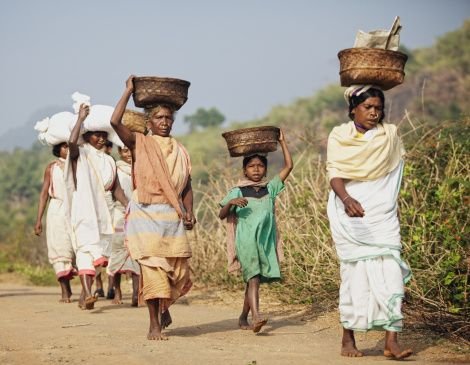
They even cultivate orchards in the forest yielding oranges, bananas, ginger and aromatic resin, among other crops which they sell at local markets. They even keep livestock such as chicken, pigs, goats and buffalo, supplementing their diet and providing other necessities. Their holistic approach to food and production and even resource management for that matter of fact, underscores the Dongria’s connection to their land and their ability to thrive within it, it even embodies a sustainable way of life which is deeply rooted in tradition and respect for nature.
However, the recent condition of this community reveals a disturbing regression. The tribe faces renewed peril as governmental pressure mount to facilitate mining interests. Leaders of the Dongria community endure harassment and wrongful incarceration by the authorities, signalling a blatant disregard for their rights and autonomy. Action like these, not only undermine their struggle for self-preservation but also exposes the systematic oppression these indigenous people often face in the pursuit of profit-driven agendas.
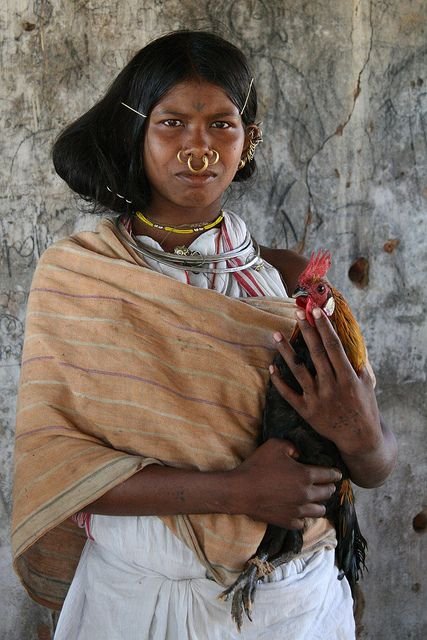
The government’s complicity in targeting Dongria leaders reflects a troubling trend of prioritizing economic gains over human rights and environmental conservations. By silencing dissent, and manipulating legal processes, the authorities endanger the very fabric of indigenous communities and perpetuate a cycle of exploitation.
Now, lets talk about the enemy, Vedanta Resources. It is led by an Indian billionaire Anil Agarwal, who wants to mine the Niyamgiri Hills, threatening the Dongria Kondh’s way of life. Despite not obtaining the mining permission, he illegally built a refinery in Lanjigarh, encroaching on vital forest and displacing local communities. The refinery’s pollution causes various health issues and even environmental damage, with toxic waste contaminating water sources and harming wildlife.

What’s worst is that their mining plan would have intensified the destruction, with 16-hour daily operations for 23 years, leading to further pollution and deforestation. The Dongria tribe vehemently opposed Vedanta’s actions, they staged protests and gained international support. However, despite their successes, they continue to fight as long as the refinery remains, fearing for the safety of their sacred mountain and the integrity of their land. Vedanta’s disregard for environmental and human welfare underscores the destructive impact of corporate greed. But, their resilience serves as a beacon of hope for indigenous communities worldwide and they even inspire solidarity and resistance against exploitation.

In conclusion, the plight for the Dongria Kondh and their battle against Vedanta resources highlights the ongoing struggle faced by the indigenous people worldwide in the face of corporate exploitation and environmental degradation. Even though they faced formidable odds, the Dongria’s resilience, determination, and international solidarity have sparked a global conversation on indigenous rights and environmental justice. Their victory in safeguarding the Niyamgiri hills serves as a testament to the power of grassroots movements and collective action in protecting their cultural heritage and ecological integrity. However, the ongoing presence of Vedanta’s refinery underscores the ongoing threats faced by the Dongria and other indigenous communities.

As we reflect on their story, it is really crucial to recognize the importance of respecting indigenous sovereignty, preserving biodiversity and along with that preserving sustainable development over short-term economic gain. We should remember that, the Dongria’s fight is not just their own, but instead it is a rallying cry for all who cherish the planet’s natural beauty and cultural diversity. Their struggle continues to inspire and remind us of all the power of resilience, solidarity and hope in the face of adversity.


